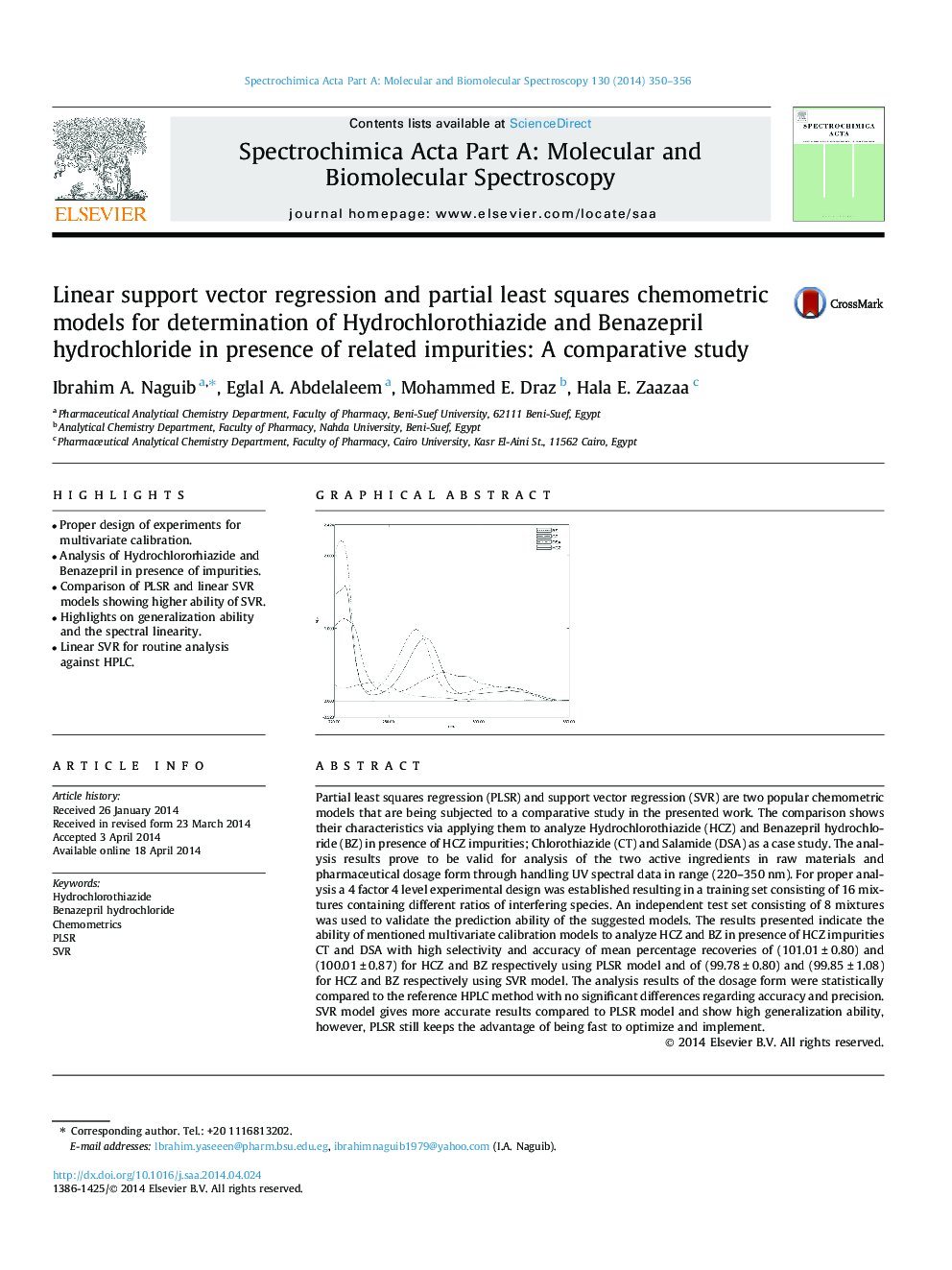| Article ID | Journal | Published Year | Pages | File Type |
|---|---|---|---|---|
| 1230362 | Spectrochimica Acta Part A: Molecular and Biomolecular Spectroscopy | 2014 | 7 Pages |
•Proper design of experiments for multivariate calibration.•Analysis of Hydrochlororhiazide and Benazepril in presence of impurities.•Comparison of PLSR and linear SVR models showing higher ability of SVR.•Highlights on generalization ability and the spectral linearity.•Linear SVR for routine analysis against HPLC.
Partial least squares regression (PLSR) and support vector regression (SVR) are two popular chemometric models that are being subjected to a comparative study in the presented work. The comparison shows their characteristics via applying them to analyze Hydrochlorothiazide (HCZ) and Benazepril hydrochloride (BZ) in presence of HCZ impurities; Chlorothiazide (CT) and Salamide (DSA) as a case study. The analysis results prove to be valid for analysis of the two active ingredients in raw materials and pharmaceutical dosage form through handling UV spectral data in range (220–350 nm). For proper analysis a 4 factor 4 level experimental design was established resulting in a training set consisting of 16 mixtures containing different ratios of interfering species. An independent test set consisting of 8 mixtures was used to validate the prediction ability of the suggested models. The results presented indicate the ability of mentioned multivariate calibration models to analyze HCZ and BZ in presence of HCZ impurities CT and DSA with high selectivity and accuracy of mean percentage recoveries of (101.01 ± 0.80) and (100.01 ± 0.87) for HCZ and BZ respectively using PLSR model and of (99.78 ± 0.80) and (99.85 ± 1.08) for HCZ and BZ respectively using SVR model. The analysis results of the dosage form were statistically compared to the reference HPLC method with no significant differences regarding accuracy and precision. SVR model gives more accurate results compared to PLSR model and show high generalization ability, however, PLSR still keeps the advantage of being fast to optimize and implement.
Graphical abstractFigure optionsDownload full-size imageDownload as PowerPoint slide
